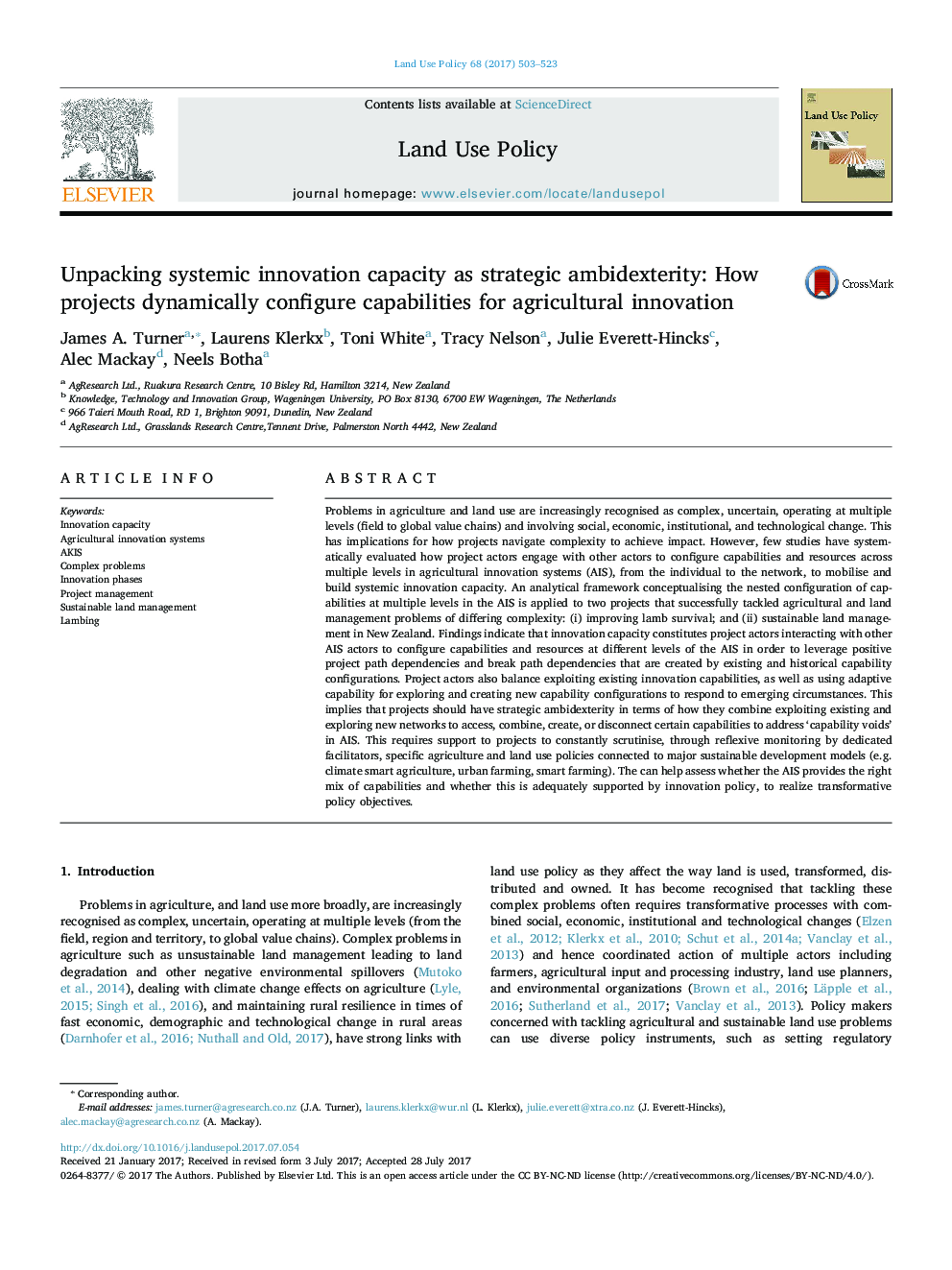| کد مقاله | کد نشریه | سال انتشار | مقاله انگلیسی | نسخه تمام متن |
|---|---|---|---|---|
| 6460590 | 1421815 | 2017 | 21 صفحه PDF | دانلود رایگان |
- To tackle complex land use problems project actors configure capabilities across levels.
- An innovation capabilities framework is used to evaluate project pathways.
- Project pathways reflect historical and existing capability configurations.
- Adaptive capability helps leverage positive and address negative project pathways.
- Project actors need strategic ambidexterity to access the right mix of capabilities.
Problems in agriculture and land use are increasingly recognised as complex, uncertain, operating at multiple levels (field to global value chains) and involving social, economic, institutional, and technological change. This has implications for how projects navigate complexity to achieve impact. However, few studies have systematically evaluated how project actors engage with other actors to configure capabilities and resources across multiple levels in agricultural innovation systems (AIS), from the individual to the network, to mobilise and build systemic innovation capacity. An analytical framework conceptualising the nested configuration of capabilities at multiple levels in the AIS is applied to two projects that successfully tackled agricultural and land management problems of differing complexity: (i) improving lamb survival; and (ii) sustainable land management in New Zealand. Findings indicate that innovation capacity constitutes project actors interacting with other AIS actors to configure capabilities and resources at different levels of the AIS in order to leverage positive project path dependencies and break path dependencies that are created by existing and historical capability configurations. Project actors also balance exploiting existing innovation capabilities, as well as using adaptive capability for exploring and creating new capability configurations to respond to emerging circumstances. This implies that projects should have strategic ambidexterity in terms of how they combine exploiting existing and exploring new networks to access, combine, create, or disconnect certain capabilities to address 'capability voids' in AIS. This requires support to projects to constantly scrutinise, through reflexive monitoring by dedicated facilitators, specific agriculture and land use policies connected to major sustainable development models (e.g. climate smart agriculture, urban farming, smart farming). The can help assess whether the AIS provides the right mix of capabilities and whether this is adequately supported by innovation policy, to realize transformative policy objectives.
Journal: Land Use Policy - Volume 68, November 2017, Pages 503-523
